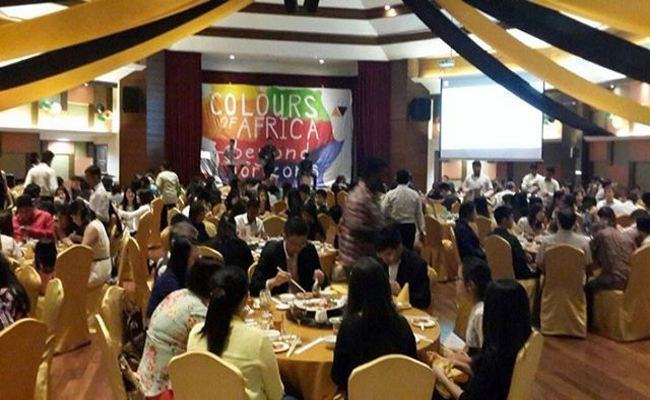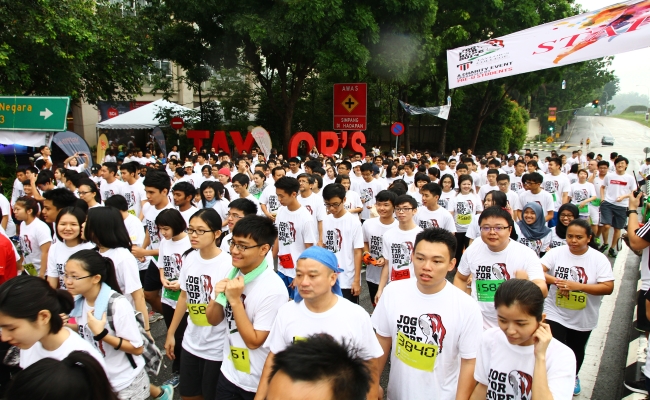In the
past few months, the act of recycling has gradually been taking on the
spotlight. Just finished a bottle of water? RECYCLE. Just finished a packet of
Milo? RECYCLE. Just received a nightmarish score on your Maths test? RECYCLE
(okay maybe not until after your exam). And with the introduction of a mini
recycling bin in every classroom, recycling is now easier than ever in TCSH.
Despite this new ease, however, many people still seem to be demonstrating a
lack of understanding and an overall lack of care for recycling. Did you know
that by disposing of your recyclables into the appropriate bin, you could be
building roofs, providing prosthetic limbs, jackets and all while saving crazy
amounts of energy?
Everybody
knows that recycling is good for you. It is good for the Earth, which will be
good for us so why don’t we do it? It really is not that hard to walk a few
more steps and throw your plastic bottle into the recycling bin instead of the
normal bin and it really is not that hard to choose the right bin. The amount
of waste we produce can shock you. Collectively, Americans use approximately
2,500,000 plastic bottles every hour. The average American uses seven trees a
year in paper, wood, and other products made from trees. This amounts to about
2,000,000,000 trees per year. And these are just statistics for America, a
single country. Can you imagine this for the whole world?
So what
really happens to those plastic containers, aluminium cans, paper and tetrapaks
you throw into the recycling bin?
Let us
start with the plastics. The majority of the right plastic that gets recycled
in TCSH consists of plastic bottles. The majority of the wrong plastic consists
of plastic bags and plastic wrappers (yes, those Tim Tam wrappers and Mamee
Monster packets are sadly not recyclable at TCSH). Also, please note that
plastic lids on coffee cups are actually recyclable plastics - if you look
closely at the lids, they actually have a recycling label on them.
Once delivered
to the recycling centre, plastics are sorted and then crushed together to form
huge cubes. At a plastic processing plant, these cubes are broken down and
shredded, cleaned and distributed to manufactures. These manufactures then melt
this plastic to be made into different products such as toys, stationery,
t-shirts or simply different forms of plastic again and making plastic out of
recycled resources uses about two-thirds less energy than
making new plastic.
Next
up, in the same bin as the plastics, we have the aluminium cans. The pop tabs
from aluminium cans can be used to make prosthetic limbs and if you haven’t
noticed, there’s a little carton thing that’s attached to a poster around TCSH
for people to drop off their pop tabs to go into making prosthetic limbs. The
pop tabs are combined with steel to make these limbs for the needy. Surprising
as it may be, such a small effort can have a dramatic effect on such a huge
industry. Using recycled pop tabs helps reduce the cost of producing prosthetic
limbs by as much as 90%.
Aluminium cans are 100% recyclable and are often transformed back into new cans. Making new cans takes 95% less energy to produce than if one were to make a whole new can from scratch. What happens to the aluminium cans exactly after being collected from the recycling bin is similar to plastics – they are formed into cubes, shredded, cleaned, and rolled into thin sheets to be sold to manufacturing companies to be made into cans again.
Onto the next bin, we have paper! Once again, just like plastics, the paper is sorted at the recycling plant. Then, water is added to the paper to create a pulp which is screened to remove glue, staples and such. Like aluminium, paper is often transformed into a similar version of itself again. It takes only a week to recycle newspaper and magazines into fresh newsprint to be printed on again. Cardboard is recycled into other cardboard-packaging products.
Moving
on, we have what might be the easiest recyclable item ever - tetrapaks. There
is so little room to go wrong with tetrapaks. All recyclable tetrapaks have a
label on them and all you have to do is remove the straw from your carton once
you’re done and ready to recycle it. (Flattening is also appreciated so they
take up less room.) Tetrapaks, like aluminium cans are 100% recyclable - 75%
paper fibre and 25% plastic or aluminium. So after being collected by the
recycling center, the tetrapaks will be mixed with water in a gigantic blender,
kind of like the pulping process with paper. Here, we will obtain a separated
mixture - one with paper fibre and one with a polymer-aluminium mix. The paper
fibre can be made into tissue, office paper and egg cartons while the poly-al
mix can be made into roofing tiles. All these products are made with drying and
heating processes.
Side
note! You should really try your best to clean all your items before disposing
of it in the recycling bin. Grease and food stains on plastics and papers can
contaminate the recycling process and cause it to be un-recyclable in the end.
And of
course, all these recyclable items can even be used in DIY projects to make all
sorts of quirky items from plant pots to decorative household objects to
dresses to furniture. Some whole houses are even made from these recyclable
items.
Some
people may feel that they do not play an important role in the recycling
process, that there is simply too much waste (or rather too many ignorant
people) such that no amount of recycling on their part could ever really make a
difference, and the end of the world is imminent and inevitable and therefore
pointless to fight. However, I believe that every single one of us should take
on responsibility as a fellow resident of the Earth and make it our job to do
our part in making earth a little more comfortable to live in and a little less
closer to destruction. The power of one small person, one small act of
recycling can cause a huge difference to a huge earth.
Written by Chin Wye Mun





















